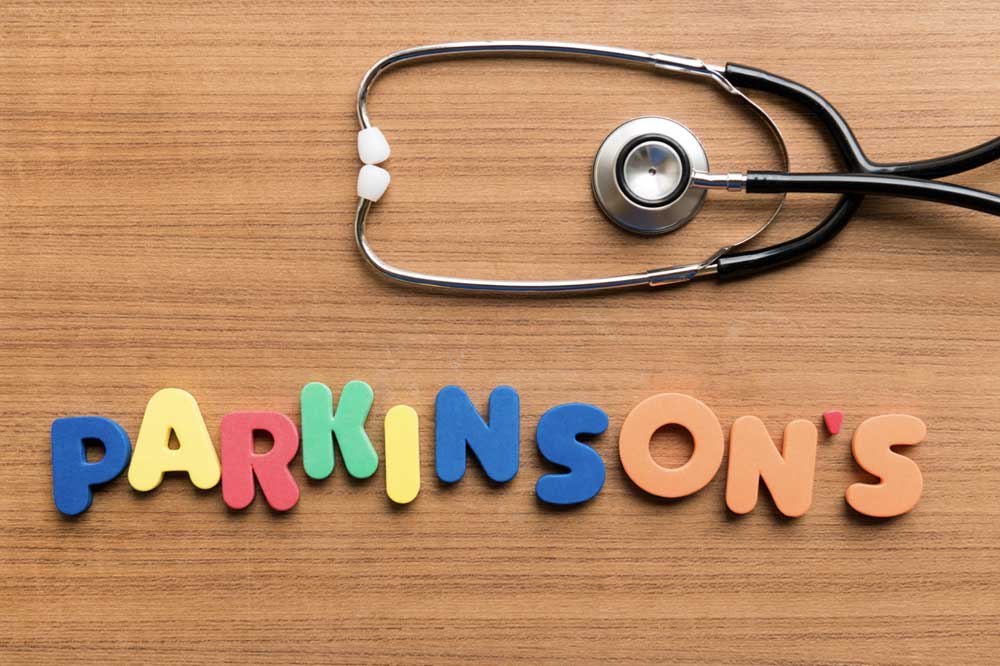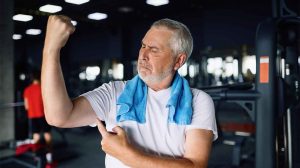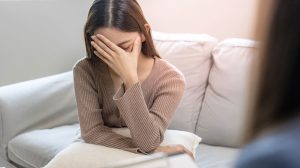What is Parkinson’s disease? What is it caused by? What are the symptoms? How is it diagnosed? How are you treated? How long does it last? What are the possible complications? How do you live with Parkinson’s disease? Instructions
What causes Parkinson’s disease?
The disease is caused by damage to brain cells that produce a substance called dopamine. As a result, there is a decrease in the level of dopamine secreted in the brain.
Dopamine is a neurotransmitter (substance that is used to transmit messages between cells in the brain) that has a decisive role in the ability to make movements properly. As of today, we still do not know what causes damage to the cells that produce dopamine.
Not only damage to dopamine-producing cells can cause Parkinson’s disease: it is also possible to involve other neurotransmitters in the disease such as acetylcholine and glutamate and proteins such as synuclein. The research now focuses on a broader understanding of Parkinson’s disease and the development of additional treatments.
Is Parkinson’s a hereditary disease?
It is known that the disease has a genetic (hereditary) basis, that is: if the patient has a first-degree relative (father, mother, brother, sister) who has Parkinson’s, his chance of getting Parkinson’s is higher compared to the general population. In recent years, several genes have been identified that are a risk factor for the development of the disease.
On top of that, there are environmental effects that increase the risk of getting Parkinson’s disease, for example exposure to sprays and pesticides.
What are the symptoms of Parkinson’s disease?
The symptoms of Parkinson’s disease develop in stages (gradually). At first they are hardly noticed, but later they progress and cause the patient a severe functional limitation.
It is common to divide the symptoms of Parkinson’s disease into symptoms related to movement and symptoms not related to movement. The symptoms related to movement are the symptoms that are visible to the eye and are characteristic of Parkinson’s disease.
However, Parkinson’s patients suffer at the same time from symptoms that are not related to movement and that also have a significant impact on the disease and coping with it.
These are the main symptoms of Parkinson’s disease that are related to movement :
- Trembling of the limbs.
- Muscle stiffness in a way that makes it difficult to make movements.
- Slowing of body movements.
- Difficulty walking and instability.
- Changes in speech and writing.
- Changes in facial expression.
These are the main symptoms of Parkinson’s disease that are not related to movement :
- Changes in mood ( depression , anxiety , lack of enjoyment of life, apathy).
- Psychosis , hallucinations.
- Memory disturbances, confusion.
- Sleep disorders , involuntary leg movements during sleep, sleepiness during the day.
- Sexual dysfunction.
- Dry eyes .
- Increased sweating.
- Loss of the sense of smell.
- over-salivating.
- Constipation .
- Weight loss or gain.
- Difficulty controlling urine.
- Blood pressure disorders.
- Tendency to falls.
- Pain in the whole body.
In advanced states of Parkinson’s disease, dementia may also develop .
What are the warning signs that require immediate medical attention?
Usually the symptoms at the beginning of Parkinson’s disease are not noticeable, so it is difficult to notice them. A tremor in one of the hands, a change in facial expressions or a disturbance in shaking the hand while walking are usually the symptoms at the beginning of the disease. If they appear – contact the family doctor for clarification.
how long does Parkinson’s disease last?
Parkinson’s is a chronic disease that slowly worsens. It usually appears for the first time in people who are in their fifth decade of life, but unfortunately it appears in recent decades also at younger ages.
How is the disease diagnosed?
The diagnosis is made based on the discovery of the characteristic signs of the disease during a clinical examination.
In ambiguous cases, the brain can be mapped using a PET or SPECT device with a dopaminergic marker. Abnormal mapping indicates that it is Parkinson’s disease or another degenerative disease with signs of Parkinson’s disease and other neurological disorders.
How is Parkinson’s treated?
Unfortunately, there is currently no treatment that can cure Parkinson’s disease, but it is possible to significantly improve the symptoms of the disease. The treatment is mainly through drugs that increase the level of dopamine in the brain.
Dopamine cannot be given by pill or injection, because it cannot reach the brain if it is swallowed or if it is injected into the blood, but there are several drugs that make it possible to increase the level of dopamine and the activity of dopamine in the brain:
• Levodopa – this is a drug that is the starting material of dopamine. It penetrates the blood-brain barrier and turns into dopamine in the brain. To this day it is the most effective medicine for the treatment of the disease, but it is usually reserved for advanced stages of the disease or if it appears for the first time in old age. There are several preparations that contain levodopa such as, for example, Dupicer and Cinnamate , Meduper and Stalvo.
• Comtan – given in combination with levodopa to improve its effect. It is marketed as Stalvo together with levodopa and carbidopa.
• Dopamine agonists – drugs that mimic the activity of dopamine in the brain by stimulating the dopaminergic receptors in the brain. The drugs from this family that are currently marketed in Israel are ropinirole (Requip) , pramipexole (Ciprol) and apomorphine (given by subcutaneous injections or by an Apo- Go pump ).
• Monoamine oxidase (MAO) inhibitors that inhibit the breakdown of dopamine in the brain. A drug of this type is, for example, rasagiline ( Azilact ) and selegiline . Recently, a new drug called Spinamide (Casedago) from this family was approved.
• Amantadine – a drug that encourages the secretion of dopamine from the synapse. It is given (alone or in combination with other drugs) to alleviate the symptoms of the disease.
Additional options for treatment – especially in the advanced stages of the disease or in cases of tremors that are not controlled by medication:
• Duodopa pump that regularly infuses Duodopa (Dupicar) directly into the duodenum through a catheter. This is an invasive treatment as the catheter is inserted into the duodenum through the abdominal wall. The treatment is effective for improving involuntary movements. Another pump that will soon come into use in Israel is the Stelvo water pump.
• Surgery in which an electrode is implanted in the brain (to the subthalamic nucleus). The electrode creates electrical pulses that may help reduce the symptoms of Parkinson’s disease. The surgery can also help in reducing the doses of Parkinson’s drugs, but usually does not replace the drug treatment.
• Focused ultrasound (focused US) to treat tremors. This is focused heating – using ultrasound waves – of the area of the brain responsible for tremors. The treatment – as of today – is h-sided, meaning that it only improves the tremor in one limb. Experiments have recently been carried out with the aim of enabling bilateral treatment.
What is the life expectancy of Parkinson’s patients?
As a rule, the disease does not significantly shorten life expectancy.
Will it be possible to stop the progression of the disease in the future?
One of the causes of the development of the disease is the deposition of the synuclein protein in the brain cells. The accumulation of the protein damages the function of the cells and eventually causes their death.
One of the approaches to prevent the death of the cells is the development of a “vaccine” against Parkinson’s disease through the creation of antibodies to the protein that sinks. The results of the experiments carried out so far on the patients were not encouraging, because no delay was observed in the progress indicators of the disease. However, experiments are still being done with this technology in order to improve the introduction of the drug into the brain and thus increase its effectiveness.
Could there be complications in Parkinson’s patients?
The disease has many complications including: depression and changes in mood, difficulty sleeping, autonomic disorders (constipation, difficulty urinating, drop in blood pressure when standing), repeated falls and cognitive decline.
As the disease worsens, there is a severe functional decline, and the patient becomes more and more dependent on others, to the point of total dependence on others due to the need for help and supervision throughout the day.
How do you learn to live with Parkinson’s disease?
It is important to have regular medical follow-up and follow the recommended treatment. Customization of the treatment and adherence to it make it possible to obtain a considerable relief of symptoms. It is also recommended to maintain a balanced diet rich in dietary fiber to prevent constipation.
In order to maintain independence as much as possible, one must use physical therapy and occupational therapy. In a more advanced stage of the disease, it is very important to arrange the residence in a way that allows maximum mobility despite the difficulty in walking. So, for example, the carpets should be removed from the house and the shower room and the toilet room should be adapted to the comfort of the patient.
After further progression of the disease, the patient will need the help of a therapist for all hours of the day. You should prepare for this in advance. For this purpose, you can contact the staff members at the clinic (the family doctor, the nurses or the social worker) and receive guidance in contacting the National Insurance for assistance.












Add Comment